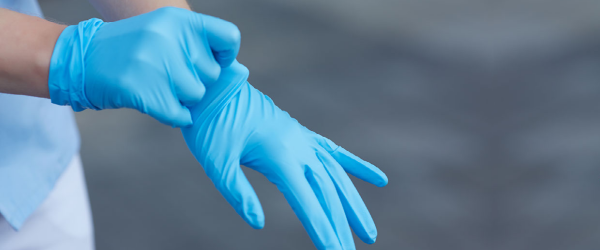Posts Tagged ‘post partum’
Posted on: February 8th, 2024 by physioathand

Pelvic health is a crucial aspect of overall well-being that often goes overlooked. Many of us have unknowingly adopted habits that may seem harmless but can negatively impact your pelvic health. Read on to find out what those habits are in order to avoid them down the road.
1. Peeing Just in Case
Many people, especially those with busy lifestyles, may feel the need to empty their bladder even when they don’t feel a strong urge. However, frequent unnecessary trips to the bathroom can lead to weakened pelvic floor muscles over time. The pelvic floor is a group of muscles that support the bladder, urethra, and other pelvic organs. Peeing “just in case” can contribute to muscle dysfunction and may lead to issues such as urinary urgency and incontinence.
2. Restricting Fluids to Avoid Leaking
It’s estimated that 1 in 3 to 4 women have urinary incontinence. While it may seem counterintuitive, limiting fluid intake to prevent urinary leakage is not actually a healthy practice. When you restrict fluids, urine becomes more concentrated, irritating the bladder and potentially leading to urinary tract infections. Staying properly hydrated is essential not just for your overall health, but for supporting your pelvic organs and optimal urinary function as well.
3. Hovering Over a Toilet
Many of us do it! Hovering over a toilet seat in public restrooms (also known as hover peeing) in order to avoid direct contact with potentially unclean surfaces. Why not, right? But not so fast! Hover peeing puts strain on the pelvic floor muscles and can lead to incomplete bladder emptying, contributing to pelvic muscle tension and pelvic floor dysfunction over time.
4. “Speed Peeing”
Some people tend to forcefully push urine out during urination. This habit can strain the pelvic floor muscles. Instead of pushing, focus on relaxing and letting the urine flow naturally. Gentle, controlled urination helps maintain the integrity of the pelvic floor muscles and supports overall pelvic health.
5. Straining to Have a Bowel Movement
Straining during bowel movements is a common habit that can negatively impact pelvic health. Chronic constipation and straining can put excessive pressure on the pelvic floor muscles, leading to issues such as pelvic organ prolapse and hemorrhoids. Maintaining a high-fiber diet, staying hydrated, and adopting proper toileting habits can help prevent constipation and promote healthier bowel movements.
Taking care of your pelvic health involves being mindful of daily habits that may contribute to muscle dysfunction and other issues. By making small adjustments to your routine, you can support the health of your pelvic floor muscles.
If you experience persistent pelvic health concerns, reach out to us for personalized guidance and exercises to enhance your pelvic well-being.
Posted on: November 1st, 2022 by physioathand

Guest Post: Anonymous client of Physio At Hand.
It’s been two months since my last appointment with Heather. Just to recap, after a physical exam and interview about my lifestyle and incontinence symptoms, Heather provided me with a plan to help combat my incontinence. I needed to:
- drink more water
- perform specific exercises to strengthen my pelvic floor, 3-4 times a week
- contract my pelvic muscles throughout my day.
During my appointment with Heather, this plan seemed so doable and straightforward. I was jazzed up and empowered to take control of something that felt like it was out-of-control.
Step 1 – The Water Bottle
The first thing I did was purchase a one-gallon water bottle to help me keep track of my daily intake. Bonus! The one I picked up from Zehrs had motivational notes, which my children loved and quoted to me throughout my day. It was a lot of water to consume, but surprisingly, it did not cause me to urinate more frequently! Heather was right: my body needed the hydration and my bladder was now operating the way it was designed.
Step 2 – The Exercises
Next, I consistently worked on the exercises that Heather had demonstrated: modified squats to engage my pelvic floor and other exercises designed to strengthen my core. In addition, I was contracting my pelvic muscles in bed, while watching TV and driving around town. It wasn’t long before I noticed that there was less heaviness in my pelvis and it wasn’t long before my incontinence went away! No leaks, not even one.
Step 3 – Sticking with the Plan
I’d like to say that I’m still enjoying a leak-free existence, but unfortunately, that’s not the case. The busyness of mom life took precedence over self care and things started to slide. First the exercises and then the water. After all of my initial success, it didn’t take long for the incontinence to return. Dang.
When I met with Heather earlier this week, I confessed what had happened. The high and the low of my incontinence journey. In true Heather fashion, she could empathize (she’s also a busy mom) and focused on the key takeaway: the plan worked! During my appointment, we walked through all of the exercises again, including how I could easily incorporate them into my day. Heather left me feeling empowered to redouble my efforts and I’m happy to say I’m back on track… which reminds me, it’s time to hydrate!
Posted on: August 27th, 2022 by physioathand

Guest Post: Anonymous client of Physio At Hand –
Just over a month ago I was getting ready to meet Heather for the first time, share that I had been living with sporadic incontinence, and hopefully, start on the road to recovery!
On the day of my appointment, Heather arrived right on time, armed with her PPE and equipment bag (think Mary Poppins). I wasn’t sure what to expect, but I definitely didn’t anticipate so many intake questions! We sat at my kitchen table for quite some time looking through my intake forms; Heather left no stone unturned when it came to getting an accurate account of my health, wellbeing and lifestyle. Once she had everything accounted for, we got down to business discussing the main reason she was here: Why was I peeing my pants?
Like any good detective, Heather wanted to collect as much information as possible, which included a detailed account of my daily water intake and toilet use. I was asked to track two separate days and she would use the data to see if I had enough fluids. We would then evaluate the results at my next appointment.
Lesson 1 – Being dehydrated can actually cause incontinence!
Next came the physical exam and we all know what that means! Yes, THAT type of physical exam. Although I wasn’t looking forward to it, I knew in my heart that it was part of the process of achieving wellness, so I had to get it done. Luckly, Heather is down-to-earth and put me right at ease. “I do one of these everyday! It’s not a big deal for me”, which made me feel much better knowing only one of us felt weird!
As we moved from an external exam across my lower torso, to an internal exam, Heather explained what she was checking for and how it related to incontinence. She looked for pain, discomfort and also strength too. At the end of the exam, we met back at the kitchen table to discuss the next steps.
Lesson 2 – Exercise is medicine!
The physical exam determined that I had stage 2 pelvic organ prolapse, which she assured me was still very treatable with, you guessed it, exercise! Heather then laid on my floor and showed me several different exercises that would help to strengthen my pelvic muscles and, in theory, help to stop my incontinence. I was tasked to perform both the exercises and the bladder diary before my next appointment and we would discuss the results.
Lesson 3 – You don’t have to live with incontinence.
During our conversation, I mentioned to Heather that many of my friends and family told me that they struggle with leaky bladders too. It was a sentiment Heather was all too familiar with. She assured me there were many non-surgical ways of healing available and that women didn’t have to live with incontinence.
Follow along as I tackle the bladder diary (spoiler alert – I wasn’t getting enough water!) and the exercises designed to improve my pelvic floor!
Posted on: July 21st, 2022 by physioathand

Guest Post: Anonymous client of Physio At Hand –
If you’re a mom, you’ve likely been part of a conversation where women share their incontinence symptoms. Do you pee when you:
- Laugh
- Sneeze
- Run
- Jump rope
- Sleep
- Stand up
- Don’t even talk about that family trip to SkyZone
I often listened with a sympathetic ear to the stories I heard, but had never experienced symptoms myself. Almost 9 years after giving birth to my youngest child, I thought I had been spared the incontinence that friends often complained about. No leaky bladder! I had healed fast after childbirth without any complications.
So when I started noticing wet underwear, I didn’t think much of it – certainly not that my bladder was leaking! Afterall, I had survived postpartum incontinence and assumed it would be smooth sailing from here on out. I was wrong! I was suddenly peeing my pants and my leaky bladder was only getting worse!
It wasn’t until I saw Heather’s posts about incontinence that I started to get a clearer picture about what I was experiencing and what could be done. From her posts, I learned:
Yes, incontinence is common. No, it’s not normal.
It’s true! Since a leaky bladder was such an everyday complaint, I assumed it was just something many of us had to live with. A right of passage when giving birth or something that happened with age! Unfortunately, while it’s common among women, I discovered that it wasn’t a normal part of being a woman.
There are ways to reduce or eliminate incontinence!
This came as a huge surprise to me (and all the women I’ve talked to)! Leaky bladders don’t have to be a life sentence. Whether you are a new mom or a senior, with the help of a pelvic floor physiotherapist, there were ways to mitigate or stop incontinence.
As with most things in life, the first step was the hardest: I had to make an appointment! The thought of having an internal exam didn’t appeal to me, but truthfully, peeing my pants was much worse! I discovered Heather specialized in pelvic health physiotherapy and knew she’d be the right professional for the job.
To make things even easier, Heather has a completely automated booking system (click here) and I was able to find a time that worked for me. Plus, as a mobile physiotherapist, I didn’t have to find a sitter for my kids or think about directions or parking – Heather came to me!
Stick with me as I share my story from leaky bladder to (hopefully) a restored pelvic floor and wellness! In the blog posts ahead, I’ll share a bit more about my unique leaky bladder symptoms, what I experienced during my first appointment and what I’ve been doing since!




